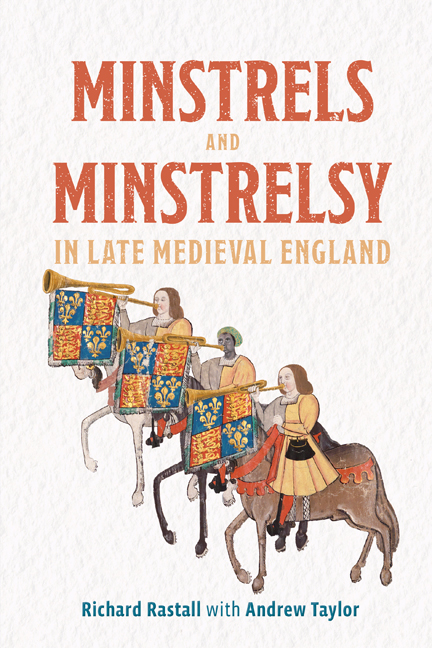Book contents
- Frontmatter
- Dedication
- Contents
- List of illustrations
- List of music examples
- List of abbreviations
- A note on references
- A note on money
- A note on dates
- Preface
- Acknowledgments
- Part I Minstrels and Minstrelsy in the Elite Households
- Part II Urban Minstrelsy
- Part III On the Road
- Part IV Minstrel Performance
- Envoi
- Bibliography
- Index
1 - The royal households and their minstrels
Published online by Cambridge University Press: 09 January 2024
- Frontmatter
- Dedication
- Contents
- List of illustrations
- List of music examples
- List of abbreviations
- A note on references
- A note on money
- A note on dates
- Preface
- Acknowledgments
- Part I Minstrels and Minstrelsy in the Elite Households
- Part II Urban Minstrelsy
- Part III On the Road
- Part IV Minstrel Performance
- Envoi
- Bibliography
- Index
Summary
The household and its operation
Minstrelsy could be a precarious way of making a living, but a permanent place in a large household offered considerable security. Of the many great households of late medieval England, the royal households provided the best positions available, with a good income and some security should a minstrel be unable to work through illness or old age. They offered the chance of lucrative work elsewhere, too, for the royal minstrels were not needed in Court all the year round. For much of the time they were free to work as independent minstrels, with the advantage of wearing the royal livery. We should expect the minstrels of the royal households to be among the most highly-skilled members of their profession, and therefore commanding higher rewards than others: rewards to liveried servants generally reflected the status of the noble whose livery they wore, so that gifts to the king's minstrels from towns and the nobility were more generous than those to other minstrels.
The word ‘household’ in this context was not a building but a group of people, the officers and servants forming a community around the principal. There were usually at least three royal households, being those of the king, the queen and the Prince of Wales. In some reigns there was an additional household for the king's younger sons (the daughters being brought up in the queen's household). These households tended to be peripatetic, partly to administer the various estates owned by the royal family, and partly because no one estate could feed and maintain a large household indefinitely. In times of war, too, the king and his household often travelled large distances very quickly. In such circumstances the household's structures and procedures had to be efficient and clearly defined.
The king's household
The king's household contained not only his domestic servants (of the privy chamber, kitchen, buttery, and so on), but also the gentlemen and household knights who acted as the king's daily companions and bodyguards, and the clerical and other staff of the Chamber, Wardrobe and other departments.
- Type
- Chapter
- Information
- Minstrels and Minstrelsy in Late Medieval England , pp. 3 - 13Publisher: Boydell & BrewerPrint publication year: 2023



